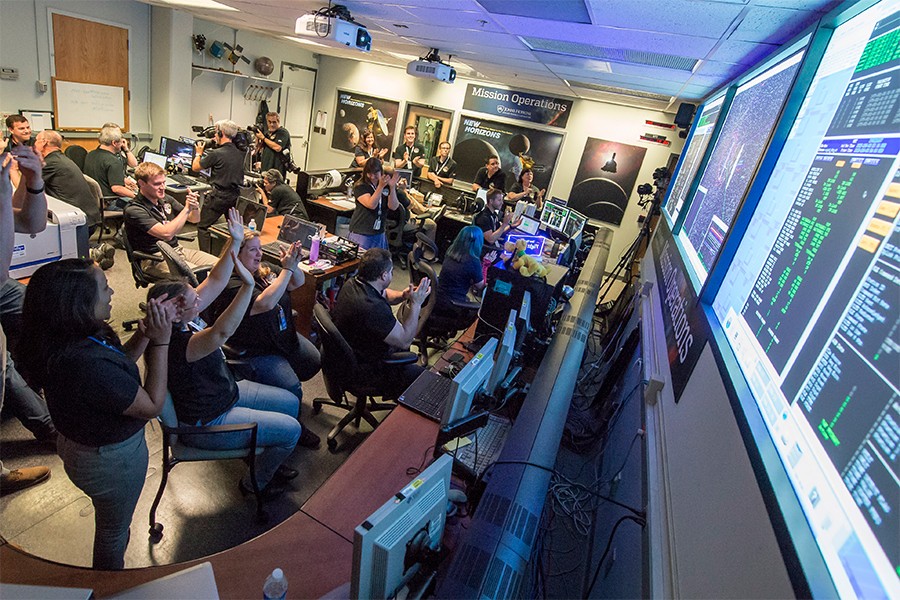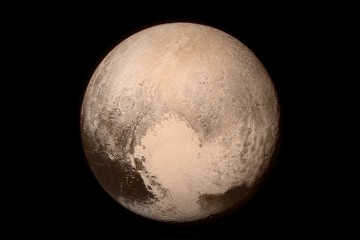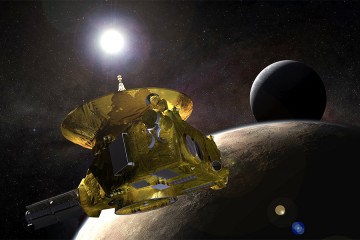The call everyone was waiting for is in. NASA's New Horizons spacecraft phoned home just before 9 p.m. EDT Tuesday to tell the mission team and the world it had accomplished its historic flyby of Pluto.
"I know today we've inspired a whole new generation of explorers with this great success, and we look forward to the discoveries yet to come," NASA Administrator Charles Bolden said. "This is a historic win for science and for exploration. We've truly once again raised the bar of human potential."
The preprogrammed "phone call"—a 15-minute series of status messages beamed back to mission operations at the Johns Hopkins University Applied Physics Laboratory through NASA's Deep Space Network—ended a very suspenseful 21-hour waiting period. New Horizons had been instructed to spend the day gathering the maximum amount of data, and not communicating with Earth until it was beyond the Pluto system.
"With the successful flyby of Pluto we are celebrating the capstone event in a golden age of planetary exploration," said John Grunsfeld, associate administrator for NASA's Science Mission Directorate in Washington. "While this historic event is still unfolding—with the most exciting Pluto science still ahead of us—a new era of solar system exploration is just beginning. NASA missions will unravel the mysteries of Mars, Jupiter, Europa and worlds around other suns in the coming years."
Pluto is the first Kuiper Belt object visited by a mission from Earth. New Horizons will continue on its adventure deeper into the Kuiper Belt, where thousands of objects hold frozen clues as to how the solar system formed.
"Following in the footsteps of planetary exploration missions such as Mariner, Pioneer, and Voyager, New Horizons has triumphed at Pluto," said New Horizons principal investigator Alan Stern of the Southwest Research Institute in Boulder, Colorado. "The New Horizons flyby completes the first era of planetary reconnaissance, a half-century-long endeavor that will forever be a legacy of our time."
New Horizons is collecting so much data it will take 16 months to send it all back to Earth.
"On behalf of everyone at the Johns Hopkins University Applied Physics Laboratory, I want to congratulate the New Horizons team for the dedication, skill, creativity, and determination they demonstrated to reach this historic milestone," APL Director Ralph Semmel said. "We are proud to be a part of a truly amazing team of scientists, engineers, and mission operations experts from across our nation who worked tirelessly to ensure the success of this mission."
APL designed, built, and operates the New Horizons spacecraft and manages the mission for NASA's Science Mission Directorate. Southwest Research Institute leads the mission, science team, payload operation,s and encounter science planning. New Horizons is part of NASA's New Frontiers Program, managed by the agency's Marshall Space Flight Center in Huntsville, Alabama.
Posted in Science+Technology
Tagged applied physics laboratory, space exploration, nasa, new horizons











